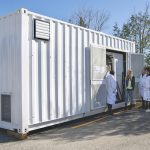Green ammonia production is about to be put through its paces on one southern Manitoba farm. Green energy company FuelPositive, based in Waterloo, Ont., says its inaugural farm-scale demonstration system will be deployed in January near Sperling. The system is set to be installed on R&L Acres, operated by Tracy and Curtis Hiebert. Why it matters: Green












